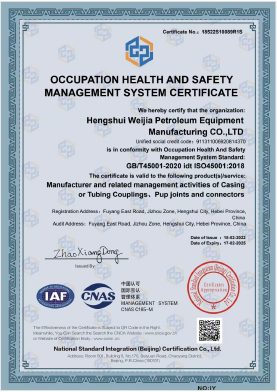- Afrikaans
- Albanian
- Amharic
- Arabic
- Armenian
- Azerbaijani
- Basque
- Belarusian
- Bengali
- Bosnian
- Bulgarian
- Catalan
- Cebuano
- Corsican
- Croatian
- Czech
- Danish
- Dutch
- English
- Esperanto
- Estonian
- Finnish
- French
- Frisian
- Galician
- Georgian
- German
- Greek
- Gujarati
- Haitian Creole
- hausa
- hawaiian
- Hebrew
- Hindi
- Miao
- Hungarian
- Icelandic
- igbo
- Indonesian
- irish
- Italian
- Japanese
- Javanese
- Kannada
- kazakh
- Khmer
- Rwandese
- Korean
- Kurdish
- Kyrgyz
- Lao
- Latin
- Latvian
- Lithuanian
- Luxembourgish
- Macedonian
- Malgashi
- Malay
- Malayalam
- Maltese
- Maori
- Marathi
- Mongolian
- Myanmar
- Nepali
- Norwegian
- Norwegian
- Occitan
- Pashto
- Persian
- Polish
- Portuguese
- Punjabi
- Romanian
- Russian
- Samoan
- Scottish Gaelic
- Serbian
- Sesotho
- Shona
- Sindhi
- Sinhala
- Slovak
- Slovenian
- Somali
- Spanish
- Sundanese
- Swahili
- Swedish
- Tagalog
- Tajik
- Tamil
- Tatar
- Telugu
- Thai
- Turkish
- Turkmen
- Ukrainian
- Urdu
- Uighur
- Uzbek
- Vietnamese
- Welsh
- Bantu
- Yiddish
- Yoruba
- Zulu
Insights into Casing Thread Specifications and Coupling Design for Enhanced Oil and Gas Operations
Understanding Casing Threads and Couplings Essential Components in Oil and Gas Drilling
In the oil and gas industry, the extraction of hydrocarbons from the earth's crust presents numerous challenges, primarily due to the complex geology and the high pressures at which these resources are found. One of the critical factors in ensuring successful drilling operations is the use of casing threads and couplings. These components play a vital role in maintaining the integrity of the wellbore, providing structural support, and facilitating the efficient extraction of resources.
What are Casing Threads and Couplings?
Casing threads are the specially designed grooves or profiles located at the ends of casing pipes. They are essential for connecting multiple sections of casing together, thereby creating a continuous barrier in the wellbore. The threads are typically classified based on their shape, size, and the manner in which they are formed. Common types of casing threads include API (American Petroleum Institute) threads, which are prevalent in the industry due to their standardized dimensions and reliability.
Couplings, on the other hand, are short pieces of pipe with threads on both ends designed to connect two lengths of casing. They are crucial for achieving the desired well depth and accommodating changes in the well's diameter. Couplings help achieve a tight seal between casing segments, ensuring that the integrity of the well is maintained, preventing the influx of formation fluids, and minimizing the risk of blowouts.
Importance of Proper Casing and Thread Design
The design and selection of casing threads and couplings are paramount. Properly designed threads can withstand the immense stresses encountered during drilling, including axial loads, bending moments, and torsional forces. Failure to select the appropriate thread design can result in catastrophic failures, leading to costly downtime, environmental hazards, and safety risks for drilling crews.
casing threads and couplings

Understanding the specific requirements for casing in a given geological formation is also essential. Factors such as the depth of the well, the type of formation being drilled, and the pressure and temperature conditions all influence the choice of casing material and thread type. For instance, in high-pressure environments, premium threads with enhanced sealing capabilities may be required to prevent leaks and maintain well integrity.
Recent Innovations in Casing Technology
Recent developments in materials science and engineering have led to enhanced casing technologies. For example, the introduction of corrosion-resistant alloys and composite materials has improved the longevity and performance of casing threads and couplings. Additionally, advancements in manufacturing techniques, such as precision machining and rigorous quality control processes, have led to tighter tolerances and improved thread profiles.
Furthermore, the rise of digital technologies, such as real-time monitoring and predictive analytics, has transformed how casing integrity is assessed throughout the drilling process. By integrating sensors and data analytics, drilling operators can gain valuable insights into the performance of casing and can proactively address issues before they escalate.
Conclusion
Casing threads and couplings are integral components of the oil and gas drilling process. Their design, selection, and implementation significantly influence the safety and efficacy of operations. As the industry continues to innovate and adapt to evolving challenges, the focus on the integrity of these components will remain paramount. Understanding the technical specifications and advancements in casing technology is essential for engineers and technicians engaged in the design and execution of drilling programs, ensuring that they can successfully navigate the complexities of subsurface extraction while adhering to safety and environmental standards.
-
Tubing Pup Joints: Essential Components for Oil and Gas OperationsNewsJul.10,2025
-
Pup Joints: Essential Components for Reliable Drilling OperationsNewsJul.10,2025
-
Pipe Couplings: Connecting Your World EfficientlyNewsJul.10,2025
-
Mastering Oilfield Operations with Quality Tubing and CasingNewsJul.10,2025
-
High-Quality Casing Couplings for Every NeedNewsJul.10,2025
-
Boost Your Drilling Efficiency with Premium Crossover Tools & Seating NipplesNewsJul.10,2025







